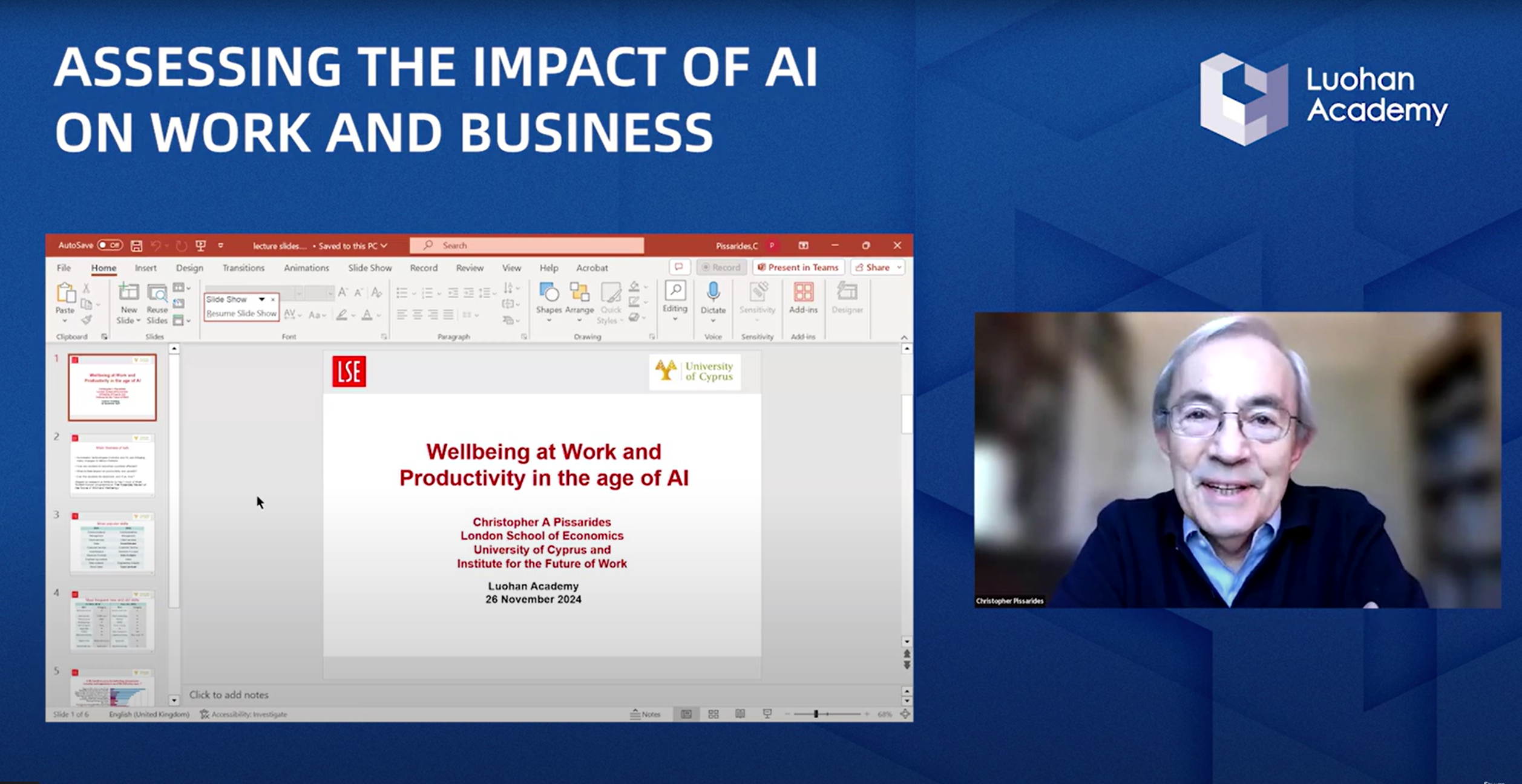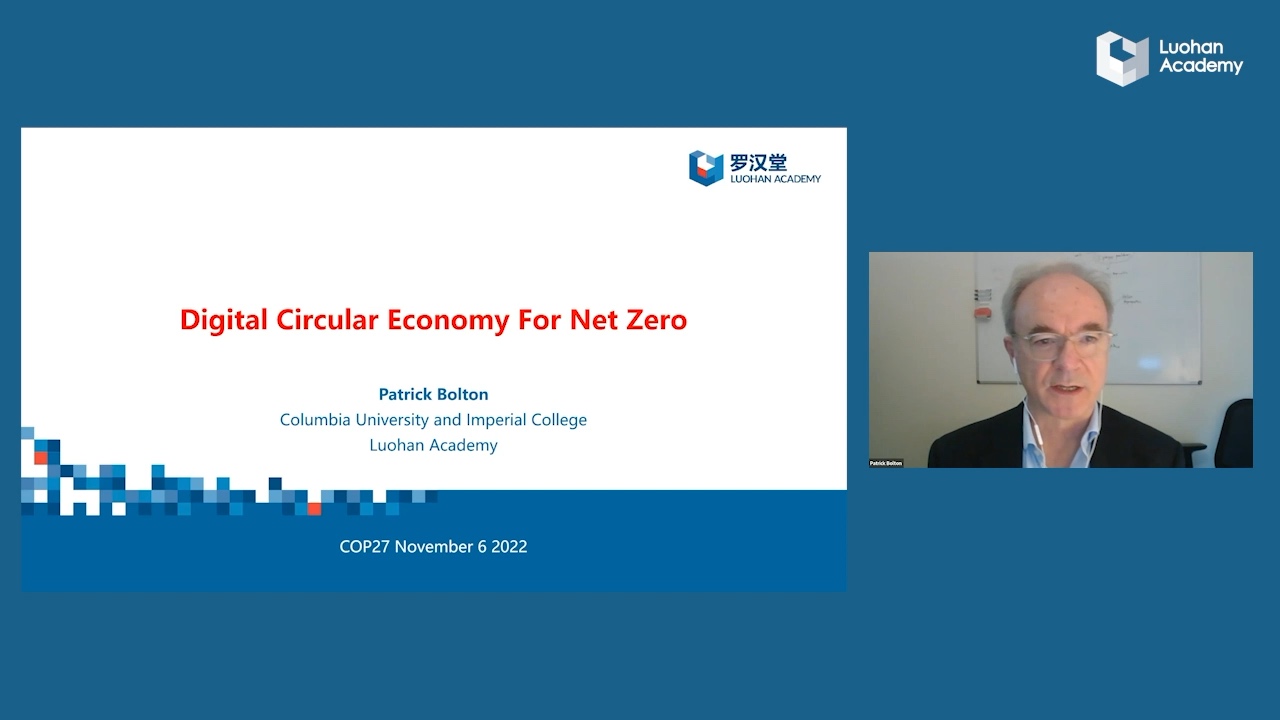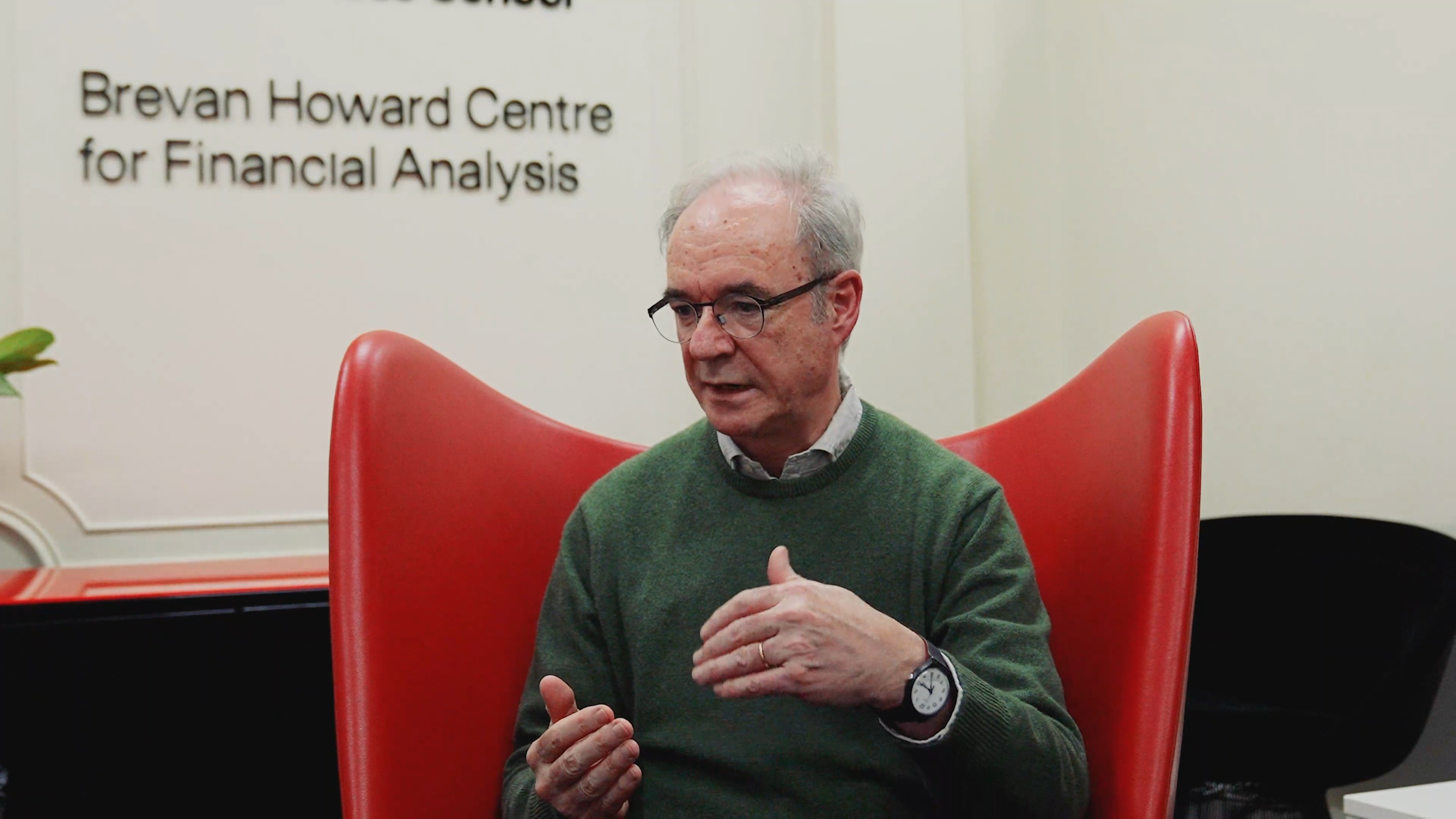For many decades, the Coase theorem of the "Division of Labor" between organizations and markets has been the fundamental framework for understanding resource allocation and coordination mechanism. However, with the emergence of digital technology and platforms, traditional boundaries are disappearing before our very eyes and giving way to the facilitation of large-scale coordination with unprecedented participation. The application of digital transformation is changing the nature of work and the structure of the economy. While digital platforms have enabled innovations and new coordination mechanisms, they also pose challenges ahead.
The 2nd Frontier Dialogue of Luohan Academy focuses on the "New Coordination and Market Dynamics". Its very purpose is to provide a place for prominent scholars, industry experts, policymakers to exchange views and address critical issues in practice regarding this topic. In particular, we hope to initiate discussions on what digital transformation means for crucial issues such as economic growth, inclusion, innovation, and competition.
Joshua Gans holds the Jeffrey S. Skoll Chair in Technical Innovation and Entrepreneurship and is a Professor of Strategic Management at University of Toronto. His research is primarily focused on competition strategy and intellectual property protection. In the dialogue, he contended that the traditional antitrust measures could be ineffective for that most platforms function like a market instead of a monopoly enterprise. In this sense, he explained how to modify platform governance through applying principles of market design.
Transcript:
Joshua Gans:
What I want to talk about not innovation in general but innovation in platforms, because I think where we‘ve come in economic understanding of platforms is a lot of understanding of sort of how they work and why they exist and things like that. This year we‘ve got a Nobel prize in economics for an actual invention in terms of market designs. We don‘t have many economic prizes that are given for inventions. We‘re kind of more unusual that way, but this time we‘ve got it. And what I wanted to suggest was a way of reframing how we look at platforms to assist us in actually coming up with new means of developing platforms and also potentially of steering them in the social interest as well.
So the question I want to ask is how the principles of market design can inform us about platform evolution? It is a literature that is being somewhat distinct from the platform literature. Although there has been a crossover with regard to one particular domain that is advertising markets, but I actually think the relationship is much closer.
The main issue is sort of trying to understand when platforms are successful. Of course we‘ve had a lot of work in this from John Tirole and numerous co-authors. And one issue is identifying the importance of pricing. Pricing in platforms does not always impact on real behavior. But one of the definitions on the fact of a two-sided platform is that pricing can actually be used to change actual behavior. So you want to use pricing in an optimal manner to make perform successful. The other is of course, the whole notion of networks, again, something that dovetails quite nicely with platforms. You want to design your platforms to enhance the interdependencies amongst groups so that they‘re whatever value they‘re creating from joining together on a platform is actually enhanced.
Networks are sometimes a constraint to establishing platforms, but once you‘ve got one going, you do want to enhance those interdependencies. And then finally, we‘ve got a goal of platform economics, which is coordination. That we want to use rules regarding openness. That is which elements are open and which are closed, to coordinate behavior on the platform. And both opening and closing can do that in different context, although it‘s not always clear, which one will do what when we have plenty of arguments and discussions regarding that. So that‘s where the platform economics literature has gone on, pricing, networks, and coordination broadly speaking.
This literature that I‘m going to argue is very related. I started off with Al Roth. Thinking about when markets work, or actually much of these lectures is sort of more negative, when did they fail? Actually, I like the positive framing. So when do they work? Roth outlined some conditions born of his experience in this matter, which are very robust and deep with many respects. And you can read about it in his book "Who Gets What – and Why," where he goes into it in lots of accessible detail.
The first condition of when a market‘s going to be successful is its Thickness, where you‘ve got plenty of buyers and sellers, coming together to transact, compete, form prices, Et cetera.
The second one is you want to avoid the congestion. When you create a market you‘re creating a public good. Every time we create a public good, we‘ve got all sorts of people who try to work out innovative ways to free ride off that. Al Roth talked a lot about unraveling, but there are other ways in which timing is manipulated and that causes some issues for markets.
And the final thing you want for markets to work properly is Safe. When people come and they transact, you want to ensure that those transactions are honored, completed, et cetera. If you‘ve got risks associated with that, it‘s going to undermine everything. So those are the three broad conditions. So I‘ve done three conditions on platforms, three conditions on markets. What am I going to do? I‘m going to relate them to each other.
So in terms of thickness and networks, they‘re very closely related. I don‘t think that‘s news to anyone. So I‘m not going to talk too much about that. The issue is sort of thinking about pricing and coordination versus congestion and safety. And interestingly enough, those ones don‘t have any neat one-to-one mapping. In fact, there‘s a bit of a soup there, and that‘s good because that‘s an opportunity for us for innovation. So let me discuss congestion and safety in turn and what that implies.
So if we‘re talking about congestion route, having an established platform is like having an established market. Having an established platform is akin to having created a public good. What that means of course, is as soon as you do that, there are incentives for people to free ride. And to find innovative ways of free riding around that, because if you free ride, you can get lots of private benefits and you don‘t care about the diminishing of the public benefits. So how does a market designer respond to that? They respond to that by creating very hard and fast rules, coupled with enforcement to prevent things like unraveling going on. And we saw those same sort of rules emerge in auctions regarding activity rules, to make sure that people did not engage in free riding behavior. So platforms have something similar that they do. They engage in rules and enforcement to prevent bad behavior. Because when a platform is established, one of the first things that occurs is people start exploiting it in ways that you do not want. That are neither in the interest of the platform or in the broader public.
Now, what this leads to are rules that tend to be one-size-fits-all, and they impact negatively on some participants. We‘ve all known this with spam filters and all sorts of other things, there are trade-offs with these things. But we sort of tend to have one-size-fits all rules emerge above markets and platforms, and they have the same trade-offs associated with them.
Now that gives you rise to all manner of issues. You can see now where you might be looking at some of the issues that have arisen with respect to platforms. And I‘ve just listed a few of them here. And often they are objecting to rules. And so people think this rule came in and hurt them. And of course my contention is that is to be expected. You have rules, they‘re going to have some aspect of non-nuance to them.
And so we have all that occurring right here. And I think you can see each of these conflicts as a issue that are rising up, we have to use rules and rules are imperfect. So what do you do? What are we going to do to improve matters? How do we think about improving matters?
One possible solution is that we employ more AI, and AI has a tendency to do is find out more edge cases and allow our rules to evolve, to be more predictive and flexible in an automated fashion. We have plenty of examples, our spam filters now have an AI solution to that, to somehow balance everything out where every bit of mail is treated individually as predictive of spam or not. But in other cases, we have not been able to use AI and we‘ve relied on more people.
I think most people employed by Facebook or its ecosystem are in the business of trying to enforce rules going on and the content moderation. Those solutions occur. AI is set up nice and friendly, whereas more people means more costs. We got a very whole economy there, so that‘s not such a great outcome, but they are both ways of doing that. The one that I want to enter into this framework, that I think has been insufficiently relied upon is voice. This was the solution that Albert Hirschman noted with regard to our other big room-making institution, government. You would use voice in order to moderate, find the right exceptions, and become more flexible in your application of rules. And I could imagine that being used in the platform context quite a lot. In fact, eBay were very early user of this sort of thing. So that‘s congestion. So we could think of ways of being able to deal with that.
What about safety, this is the other big issue that comes up with respect to platforms. So desirable platform activities, require others to take actions and make investments in a platform. No platform just exists and everybody acting passively. A platform is there, because it‘s coordinating behavior on it, that means people have to be properly incentivized. In market power, how do we get people to participate? We make commitments to promise expectations being met, we make these things safe, we say you‘re gonna come and things are gonna work out, as expected. When they don‘t happen that way, people shy away from markets, the markets fail. Platforms, the way principle means when thought about safety is being committed to various forms of openness, so that we allow people to have access to competitive options. That allows that moderation to occur.
The problem is, the both of these are commitments and the commitments can be easily eroded, even if they‘re sort of staying up front, by a lack of transparency. And also a lack of exit options, which is the other thing we faced with platforms, they intend to warps monopoly elements. We have all that going on here as another set of things that arise regarding people, lack of transparency, wanting understanding of commitments, wanting more competitive options, etc.
But again, this is an opportunity for innovation to find new ways of doing these things and there are some possible solutions. One of the possible solutions is data portability, it‘s related to an old idea that I can claim some responsibility for, which is number portability. Which was reallocation of property rights, and allowing for negotiated transfers and other things to facilitate a reduction in switching costs.
Another issue that I‘ve pushed lately is identity portability, which is a form of interoperability that we do actually enjoy in most telecommunications networks, but we haven‘t applied them to, for instance, social networks. It is another way by which we give people more competitive options by reducing switching costs, and switching costs, in particular, due to network effects.
There have been calls for algorithmic transparency, this has come up again. Stephen Wolfram has an idea about how to facilitate a market for algorithms that would rely on transparency and allow people to see what‘s going on.
We have lots of requirements coming up, again, as commitments to transparency, primarily, which is requirements for symmetric treatment going on. The biggest of these is net neutrality, that gets talked about and economists argue about, but in reality, what it is, it‘s a commitment to certain openness and certain equal treatment going on, which can be diminished in platforms. You know, there‘s been a long-standing argument, for instance, about whether Google‘s own products and other things get priority in Google‘s own search. That‘s an issue of asymmetric treatment. And there may be merit for that in certain circumstances. But the other problem is that it erodes that commitment.
Finally, there is discussion, in many circles of permissionless access. We want to have situations where you‘re able to innovate, and not have to ask permission from multiple people. Now, for the vast majority of time, people were talking about permission from government, Hernando DeSoto, and other things like that in establishing your firms etc. But, anybody dealing with COVID and the FDA, as an example of that. But we now also have that with regard to platform, how many groups you have to go through in order to access to platforms?
I had a recent book that went into this in quite a bit of detail as well. So my conclusion is that I think actually thinking about our market design challenges, and in particular congestion and safety. Applying those same logics to platforms will lead us to think of consider more options both for the platforms themselves and for regulators, and getting to the heart of some of these issues. Because I fear that some of the other solutions, you know, divestiture, separation of elements, and other things like that, are not the sort of things that are suitable for platforms. You wouldn‘t do those in markets, therefore, why should you do them in platforms. And so this is a perspective that I‘m offering here and at the discussion that we might be able to have.
For more information, please visit Luohan Academy‘s youtube channel: Luohan Academy









